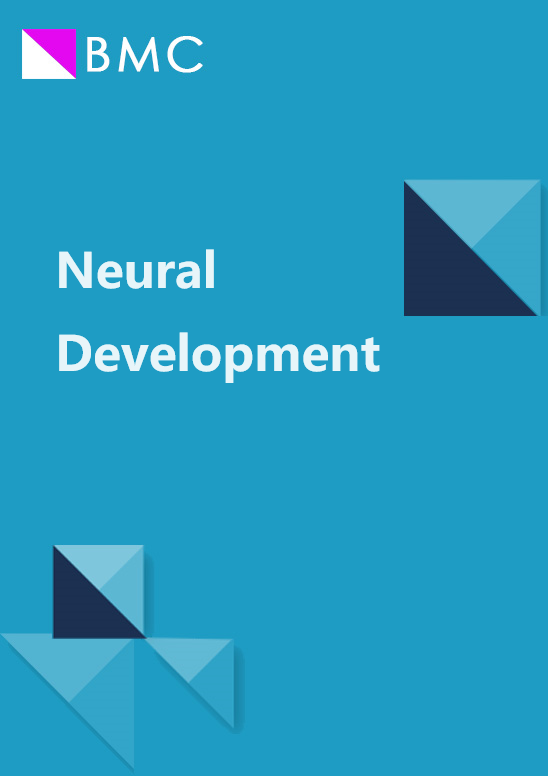无脊椎动物鸮藻成体神经系统的发育
IF 2.5
3区 生物学
Q1 DEVELOPMENTAL BIOLOGY
引用次数: 0
摘要
动物神经系统的进化起源仍然存在争议,因为我们对大多数主要动物支系的神经发育仍然了解有限。无脊椎动物是神经系统中枢化的一个物种丰富的类群,在动物神经系统起源的假说中扮演着核心角色。然而,大多数研究都集中在无脊椎动物树中嵌套较深的物种的成体上。最近,由于栉水母(Owenia fusiformis)在系统发育上处于所有其余无环节动物姊妹支系的位置,它已成为重建无环节动物祖先特征的信息物种。我们将保守神经肽 FVamide-lir、RYamide-lir、RGWamide-lir 和 MIP-lir 的免疫组织化学与基因表达相结合,全面描述了栉水母从幼虫到成年的神经发育特征。早期幼虫神经系统包括一个神经肽丰富的顶端器官,通过外周神经与原喙环和喙囊相连。原喙内有七个感觉神经元。顶端器官下方形成一个双叶脑,与发育中幼体的腹侧神经索相连。在变态过程中,大脑压缩,变成环形,躯干神经系统形成几条纵向神经索和分节侧神经。我们的研究结果揭示了栉水母(O. fusiformis)这一早期分支环带动物生命周期中神经系统的形成和重组。尽管其神经解剖结构看似简单,但该物种却拥有多样化的肽能神经系统,与其他环带动物表现出形态上的相似性,尤其是在幼虫阶段。我们的工作证明了神经肽在动物神经系统中的重要性,并强调了神经肽在整个发育过程中的不同使用方式。本文章由计算机程序翻译,如有差异,请以英文原文为准。
The development of the adult nervous system in the annelid Owenia fusiformis
The evolutionary origins of animal nervous systems remain contentious because we still have a limited understanding of neural development in most major animal clades. Annelids — a species-rich group with centralised nervous systems — have played central roles in hypotheses about the origins of animal nervous systems. However, most studies have focused on adults of deeply nested species in the annelid tree. Recently, Owenia fusiformis has emerged as an informative species to reconstruct ancestral traits in Annelida, given its phylogenetic position within the sister clade to all remaining annelids. Combining immunohistochemistry of the conserved neuropeptides FVamide-lir, RYamide-lir, RGWamide-lir and MIP-lir with gene expression, we comprehensively characterise neural development from larva to adulthood in Owenia fusiformis. The early larval nervous system comprises a neuropeptide-rich apical organ connected through peripheral nerves to a prototroch ring and the chaetal sac. There are seven sensory neurons in the prototroch. A bilobed brain forms below the apical organ and connects to the ventral nerve cord of the developing juvenile. During metamorphosis, the brain compresses, becoming ring-shaped, and the trunk nervous system develops several longitudinal cords and segmented lateral nerves. Our findings reveal the formation and reorganisation of the nervous system during the life cycle of O. fusiformis, an early-branching annelid. Despite its apparent neuroanatomical simplicity, this species has a diverse peptidergic nervous system, exhibiting morphological similarities with other annelids, particularly at the larval stages. Our work supports the importance of neuropeptides in animal nervous systems and highlights how neuropeptides are differentially used throughout development.
求助全文
通过发布文献求助,成功后即可免费获取论文全文。
去求助
来源期刊

Neural Development
生物-发育生物学
CiteScore
6.60
自引率
0.00%
发文量
11
审稿时长
>12 weeks
期刊介绍:
Neural Development is a peer-reviewed open access, online journal, which features studies that use molecular, cellular, physiological or behavioral methods to provide novel insights into the mechanisms that underlie the formation of the nervous system.
Neural Development aims to discover how the nervous system arises and acquires the abilities to sense the world and control adaptive motor output. The field includes analysis of how progenitor cells form a nervous system during embryogenesis, and how the initially formed neural circuits are shaped by experience during early postnatal life. Some studies use well-established, genetically accessible model systems, but valuable insights are also obtained from less traditional models that provide behavioral or evolutionary insights.
 求助内容:
求助内容: 应助结果提醒方式:
应助结果提醒方式:


